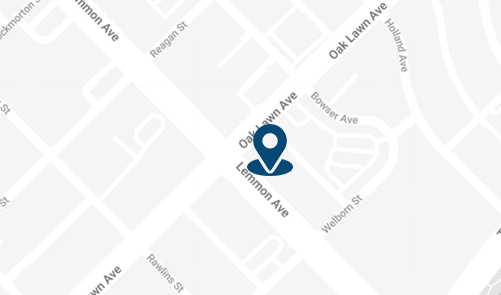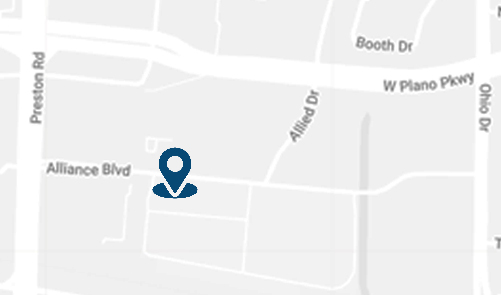By: Dr. Dev Batra | 01.29.23
Vein disease can become a chronic condition if not treated. Venous ulcers — open wounds that form on the lower leg or ankle — usually appear during the last and most significant stage of venous disease.
These ulcers are slow to heal and can quickly become infected, which can lead to lower-limb amputation in severe cases, especially in people with diabetes. About 1% of Americans develop these ulcers, which are more common as you age, especially in women.
At Texas Vascular Institute, with offices conveniently located in Dallas and Hurst, Texas, interventional radiologist Dr. Dev Batra and our expert team have extensive knowledge about the stages of chronic vein disease and the development of venous ulcers.
The team uses state-of-the-art diagnostic tools and advanced treatment options to restore your vein health. Let’s take a closer look at venous ulcers and the ways we can heal them.

How vein disease progresses
Before we talk about healing venous ulcers, we need to discuss the vein problems that lead up to them.
Chronic venous insufficiency (CVI)
Veins return deoxygenated blood from your body tissues to your heart. Too much pressure on a vein wall or on the vein’s one-way valves can cause damage, allowing blood to flow backward along its path. It pools around the damaged area instead of flowing back to the heart. That is known as venous insufficiency since blood flow is insufficient for your body’s needs. It can easily become chronic if not addressed.
Spider veins
When blood pools, small, superficial veins expand, forming thin, spiderweb-like patterns, primarily on the legs but also on the face.
Varicose veins
Varicose veins are large superficial veins. As they engorge, they appear as ropy, colored protrusions on the legs. Not just an eyesore, they can cause pain, leg swelling, and itchiness.
Edema
Edema refers to the swelling of the leg when damaged veins leak fluid into the tissues. The fluid can irritate your muscles, leading to cramping, pain, and discomfort. The skin on your lower legs may also start to appear leathery and take on a bluish or reddish tint.
Venous stasis dermatitis
Edema can lead to venous stasis dermatitis — a change in color around your lower legs and ankles that comes from bursting blood vessels. The areas appear red- or brown-spotted due to deposits of hemosiderin — a breakdown product of hemoglobin.
Venous ulcers
Venous ulcers form when the previous stages of vein disease aren’t treated. These slow-healing open sores are easy to identify because they’re:
- Found on the ankle or lower leg, often over the bone
- Surrounded by discolored and/or hardened skin
- Often bloody or filled with pus
The wound may be relatively painless, but you may feel significant pain from the edema in the leg or any infection that’s developed.
4 ways to heal your venous ulcers
At Texas Vascular Institute, our primary goals for treating venous ulcers are to keep them free of infection while also resolving the edema.
We may start by debriding the tissue — scraping away dead cells and surface contamination — so the ulcer has the opportunity to heal.
Generally, we only prescribe oral antibiotics if tissue surrounding the ulcer is infected as well. You’ll need to keep the wound environment moist and change the dressings as infrequently as possible since removing the dressing removes healthy cells, too.
Most ulcers heal within 3-4 months of treatment, but the timing may vary from one person to another.

Dr. Batra also uses four treatments to heal your venous ulcers by addressing the underlying vein disease. These techniques include:
- VenaSeal™: uses a medical-grade glue to seal the diseased vein shut
- ClosureFast™: uses radiofrequency (RF) ablation to destroy the affected vein
- Ultrasound-guided foam sclerotherapy: injects a sclerosing agent (an irritant) into the vein with ultrasound guidance, causing the vein to collapse
- Microphlebectomy: minimally invasive surgery that pulls out the entire vein through small incisions
Dr. Batra discusses your options at your consultation, recommending the one he feels best meets your condition and needs.
If you’ve developed venous ulcers, or if you suspect you may have any form of vein disease, it’s time to come into Texas Vascular Institute for an evaluation and treatment. Give us a call at either of our locations or book your appointment online today.
Read more blogs
Why Are My Veins Blue?
Wondering why your veins look blue under your skin? Learn the science behind vein color, how light affects what you see, and what it means for your health.
10 Warning Signs Of Poor Circulation And How To Fix It
Have you ever noticed your feet always feel cold, or your legs cramp up when walking? These could be warning signs of poor circulation, a condition that can impact your daily life and overall health.
Leg Pain Keeping You Up at Night?
Are restless, aching legs keeping you from a good night’s sleep? Nighttime leg pain can interfere with your rest, affecting your health, mood, and ability to take on daily activities. While there can be various causes, nighttime leg pain - especially when accompanied by feelings of heaviness, throbbing, or itchiness - could point to a vein issue.
WHAT OUR PATIENTS
have to say
Texas Vascular Institute always appreciates feedback from our valued patients. To date, we’re thrilled to have collected 378 reviews with an average rating of 5 out of 5 stars. Please read what others are saying about Texas Vascular Institute below, and as always, we would love to collect your feedback.
Leave a Review
Amazing Practice
I'm very particular with my Healthcare and tend to be cautious with referrals to specialists. This office is amazing from the first point of contact. Their staff are friendly, professional and highly knowledgeable. Then the Dr is just as amazing as his staff, absolutely brilliant. Office manager Jessica has this office running like a well oiled machine and does so with a smile, an air of confidence, kindness and professionalism. Love this practice!!
- Richard G.

Beyond Thankful
Dr Batra and his staff are amazing! We are so grateful to have found him. Everyone is so kind and so caring and Dr Batra explains everything so well and does procedures with excellence. Beyond thankful to be under their care!!!
- Bitsy P.

Gold Standard
This is a gold standard for how a medical practice should be run. I was promptly seen at my scheduled time, my ultrasound was thorough and I received plenty of attention and care from the staff and Dr.Batra.
- Weronika L.
INSURANCE
We accept most major insurance plans. Please contact the medical office for all insurance related questions.









8330 Meadow Rd #100
Dallas, TX 75231
For Appointments: 972-798-4710
General Inquiries: 972-646-8346

809 West Harwood Rd, Suite 101,
Hurst, TX 76054
For Appointments: 972-798-4710
General Inquiries: 972-646-8346

4716 Alliance Blvd Suite #180,
Plano, TX 75093
For Appointments: 972-798-4710
General Inquiries: 972-646-8346

